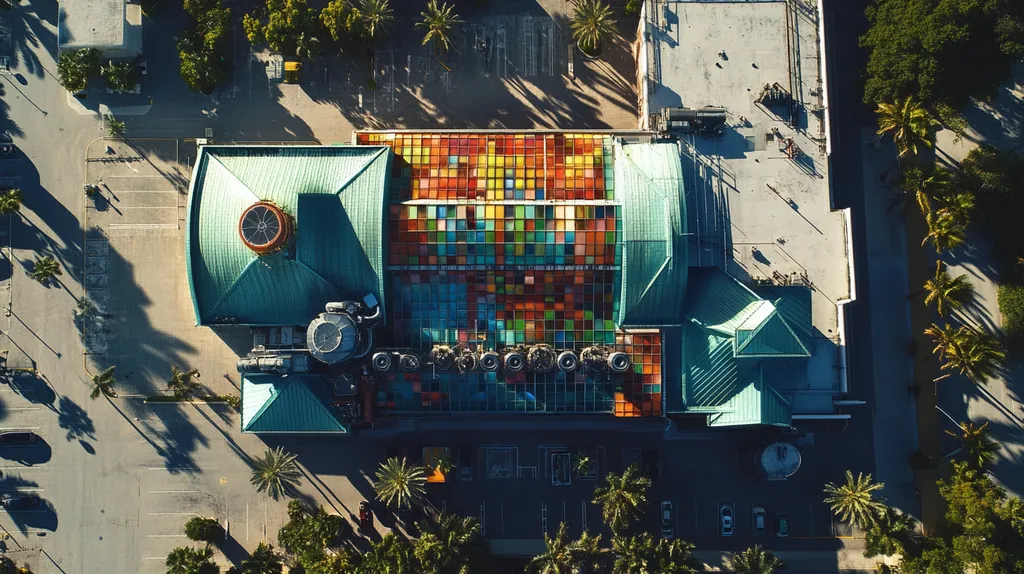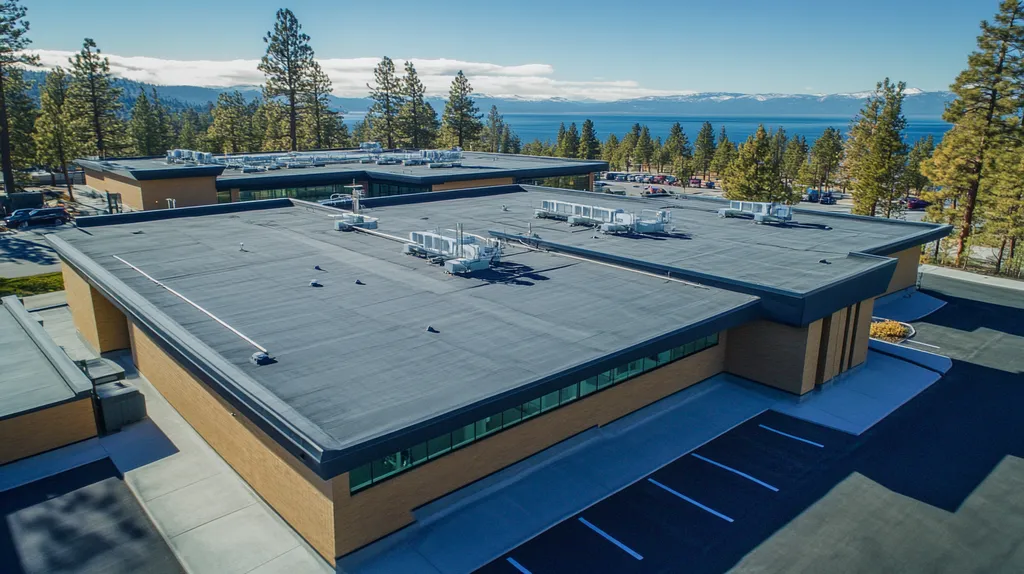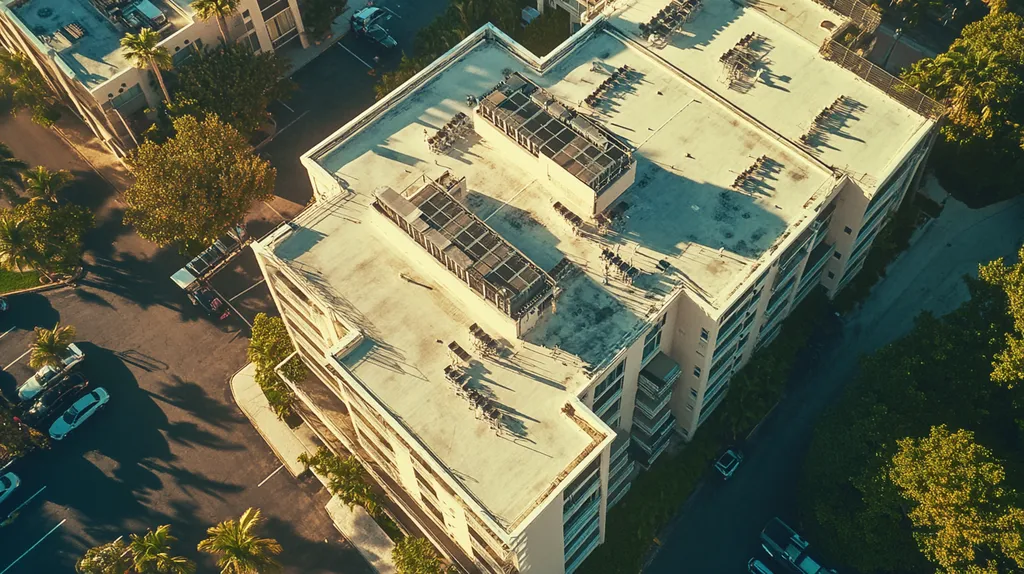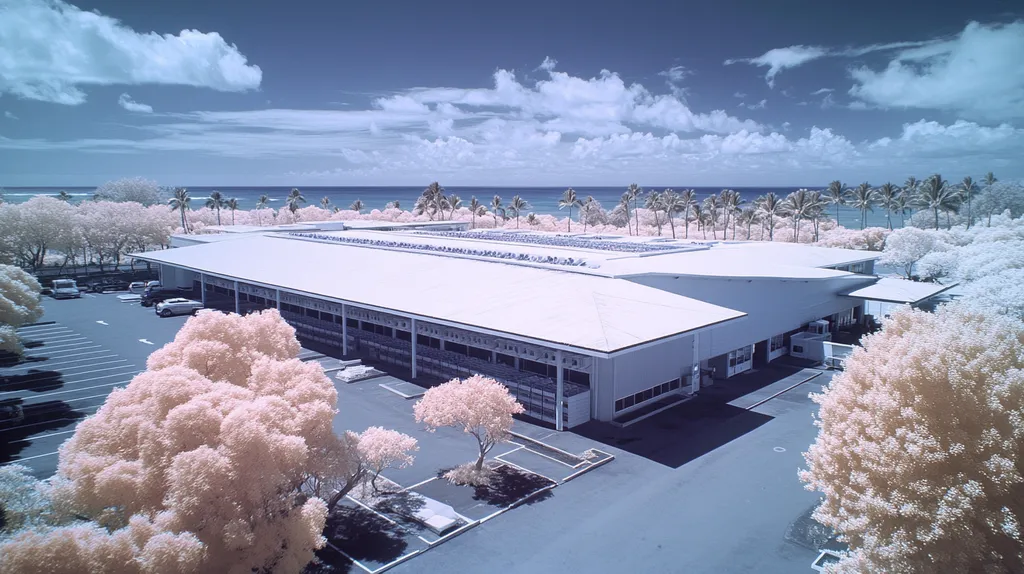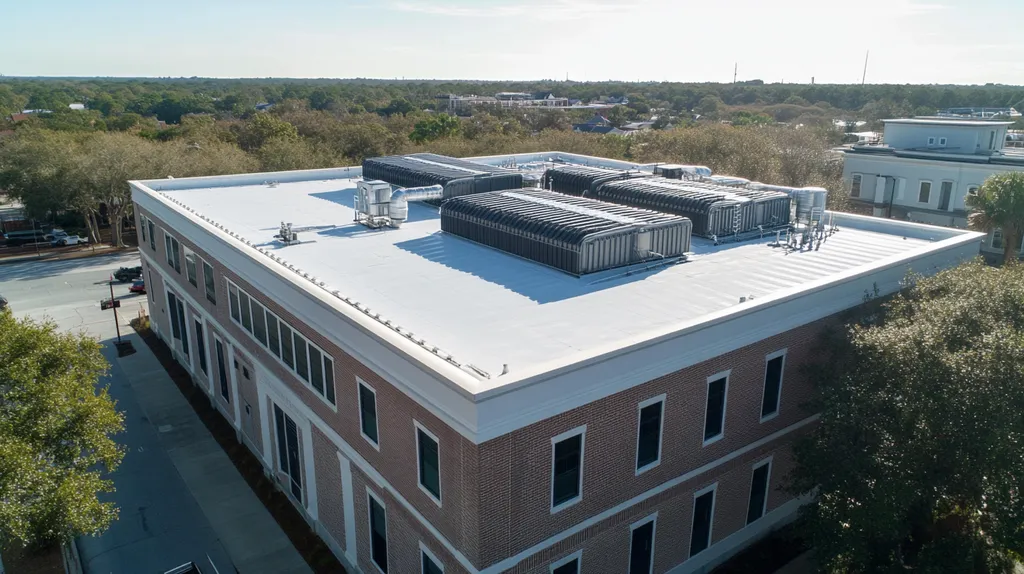Welcome to today’s Battle Royale featuring two roofing heavyweights: “Asphalt Shingle Removal” in the east corner versus “EPDM Removal” in the west!
Tonight’s showdown pits these contenders against each other across six punishing rounds designed to test every aspect of their performance for Industrial Roof Removal Waste Generation.
At stake? Millions in potential costs, decades of building protection, and the critical performance demands of modern commercial and industrial facilities.
Our professional judging panel will evaluate each round on technical merit, real-world performance, and value delivery. After all six rounds, we’ll declare our ultimate champion.
Ladies and gentlemen, facility managers and building owners… it’s time to rumble!
ROUND 1: INITIAL COSTS & INSTALLATION
When it comes to industrial roofing removal, the stakes are astronomically high. The construction and demolition industry generates over 12 million tons of asphalt roofing waste annually, making the choice between removal methods a critical environmental and financial decision. (source: Factor Roofing)
Understanding the financial implications of roof removal methods can mean the difference between a successful project and a budget-breaking nightmare. Let’s examine how asphalt shingle and EPDM removal compare in terms of material costs, installation complexities, and project timelines.
Material Expenses
Material expenses for roof removal projects include not just the cost of new materials, but also disposal fees and equipment rentals. The composition of the existing roof significantly impacts these costs.
Asphalt shingle removal typically requires less specialized equipment and offers more competitive disposal rates due to established recycling channels. The materials are also easier to handle and transport, reducing equipment rental costs.
EPDM removal often demands specialized cutting tools and handling equipment. The rubber membrane’s weight and size can increase transportation costs, while fewer recycling options may lead to higher disposal fees.
For pure material expenses, asphalt shingle removal holds a clear ADVANTAGE over EPDM removal.
Installation Complexity
Installation complexity directly affects labor costs and project duration. The more complex the removal process, the higher the risk of complications and cost overruns.
Asphalt shingle removal follows a straightforward process – tear off, clean up, and dispose. Most roofing crews are thoroughly familiar with the procedure, reducing the likelihood of errors.
EPDM removal requires careful handling to prevent membrane tearing and maintain material integrity. The process often involves multiple steps and specialized knowledge, increasing the potential for complications.
When comparing complexity, asphalt shingle removal demonstrates an ADVANTAGE with its simpler, more standardized process.
Project Timeline
Project timelines affect not just labor costs but also business disruption. Faster completion means quicker return to normal operations for facility owners.
Asphalt shingle removal typically proceeds at a predictable pace, with crews able to remove large sections quickly. The systematic nature of the work allows for accurate timeline estimates.
EPDM removal often requires more precision and care, leading to longer project durations. Weather sensitivity can also create more frequent work stoppages compared to shingle removal.
In timeline efficiency, asphalt shingle removal claims another ADVANTAGE with its faster, more predictable completion schedule.
ROUND 1 WINNER: ASPHALT SHINGLE REMOVAL
ROUND 2: DURABILITY & LIFESPAN
When evaluating industrial roofing materials, durability and lifespan directly impact waste generation and replacement frequency. The U.S. alone generates about 11 million tons of asphalt shingle waste annually from roof replacements, highlighting the environmental impact of roofing choices. (source: Authentic Roof)
Understanding how different roofing materials perform over time helps facility managers make informed decisions that minimize waste and maximize return on investment. Let’s examine how asphalt shingles and EPDM compare in terms of longevity and durability.
Material Longevity
Material longevity directly affects how frequently a roof needs replacement. Longer-lasting materials generate less waste over time and reduce the total cost of ownership.
Asphalt shingles typically last 15-20 years in industrial applications. Environmental factors like extreme temperatures and UV exposure can significantly reduce this lifespan, leading to premature replacement and increased waste generation.
EPDM roofing systems demonstrate remarkable longevity, often lasting 30-40 years when properly maintained. The material’s superior resistance to weathering and UV radiation helps maintain its integrity longer, reducing replacement frequency.
For material longevity, EPDM holds a clear ADVANTAGE over asphalt shingles.
Weather Resistance
Weather resistance determines how well roofing materials withstand environmental stresses. Better resistance means fewer repairs and less waste from damaged sections.
Asphalt shingles can become brittle over time, making them susceptible to wind damage and cracking. Heat cycling and moisture exposure often lead to curling and granule loss, necessitating more frequent repairs.
EPDM maintains its flexibility throughout its service life, allowing it to accommodate building movement and temperature changes. Its seamless installation reduces vulnerable points where weather damage typically occurs.
In weather resistance, EPDM demonstrates another ADVANTAGE over asphalt shingles.
Maintenance Requirements
Maintenance needs affect both long-term durability and waste generation. Materials requiring less maintenance typically produce less repair-related waste.
Asphalt shingles need regular inspection and maintenance to address issues like loose shingles, damaged flashing, and granule loss. Each repair generates waste materials that often can’t be recycled.
EPDM requires minimal maintenance beyond routine inspections. When repairs are needed, they can often be accomplished with targeted patching rather than full section replacement.
Regarding maintenance requirements, EPDM claims another ADVANTAGE with its lower maintenance needs and reduced repair waste.
ROUND 2 WINNER: EPDM
ROUND 3: PERFORMANCE FACTORS
When it comes to industrial roof removal, waste generation can make or break a project’s environmental impact and bottom line. Every decision about removal methods ripples through disposal costs, environmental compliance, and facility operations. The sheer volume is staggering – over 11 million tons of asphalt shingle waste is generated annually in the U.S., equivalent to the weight of every Ford vehicle sold in 2011. (source: Recycle Nation)
Waste Volume Generation
The amount of waste generated during roof removal directly impacts disposal costs, transportation requirements, and environmental compliance. Understanding these volumes helps facility managers plan effectively for removal projects.
Asphalt shingle removal typically generates 2-3 tons of waste per 1,000 square feet. This includes not just the shingles themselves, but also underlayment, fasteners, and associated materials that often can’t be separated for recycling.
EPDM removal produces significantly less waste, averaging 1-1.5 tons per 1,000 square feet. The single-layer membrane system means fewer materials to dispose of and easier separation of components.
In terms of waste volume, EPDM removal shows a clear ADVANTAGE with its lower overall waste generation.
Recyclability Potential
The ability to recycle removed roofing materials significantly affects both disposal costs and environmental impact. Better recyclability means less landfill burden and potentially lower disposal fees.
Asphalt shingles can be recycled into road paving materials, but the process requires specialized facilities and careful material separation. Many regions lack adequate recycling infrastructure, forcing materials into landfills.
EPDM membranes offer excellent recycling potential, with many manufacturers operating take-back programs. The material can be ground up and reused in new roofing products or repurposed for other applications.
For recyclability, EPDM demonstrates another ADVANTAGE due to its established recycling channels and simpler material composition.
Disposal Complexity
The complexity of waste disposal affects both project timelines and costs. Simpler disposal processes mean fewer logistical challenges and lower risk of compliance issues.
Asphalt shingle disposal requires careful handling due to sharp edges and mixed materials. Multiple dumpster loads are typically needed, increasing transportation costs and site congestion.
EPDM removal allows for more efficient disposal with fewer loads needed. The flexible material can be rolled and bundled, maximizing container space and reducing transportation requirements.
Regarding disposal complexity, EPDM claims another ADVANTAGE through its more streamlined disposal process.
ROUND 3 WINNER: EPDM Removal
ROUND 4: MAINTENANCE REQUIREMENTS
When evaluating industrial roofing systems, maintenance requirements directly impact both operational costs and waste generation. Poor maintenance practices can lead to premature failure, generating unnecessary waste and forcing early replacement. The environmental stakes are significant – careful maintenance can extend roof life by decades, preventing tons of waste from entering landfills.
Inspection Frequency
Regular inspections form the foundation of effective roof maintenance. The frequency and depth of these inspections directly affect how quickly issues are identified and addressed, preventing unnecessary waste from repairs or premature replacement.
Asphalt shingle roofs require quarterly inspections to check for loose or damaged shingles, granule loss, and drainage issues. Each inspection typically generates waste from minor repairs and replacement of damaged sections.
EPDM systems need only semi-annual inspections under normal conditions. When repairs are needed, they generally involve minimal material removal and can often be accomplished through patching rather than section replacement.
For inspection frequency requirements, EPDM shows an ADVANTAGE with its reduced inspection needs and lower repair-related waste.
Repair Complexity
The complexity of maintenance repairs affects both the amount of waste generated and the likelihood of successful repair outcomes. Simpler repairs typically produce less waste and have higher success rates.
Asphalt shingle repairs often require removing and replacing multiple shingles to address even minor issues. This process generates significant waste and can compromise surrounding materials.
EPDM repairs typically involve simple patching or seam reinforcement. The single-layer system allows for targeted repairs that minimize material removal and waste generation.
In terms of repair complexity, EPDM demonstrates an ADVANTAGE through its simpler, less wasteful repair procedures.
Long-term Performance
Maintenance requirements directly impact long-term performance and ultimate waste generation. Better performing systems require less frequent replacement, reducing total lifecycle waste.
Asphalt shingle maintenance becomes increasingly demanding over time as materials deteriorate. Even with diligent maintenance, shingles often require complete replacement within 20 years.
EPDM systems maintain consistent performance with basic maintenance throughout their service life. Proper care can extend system lifespan beyond 30 years, significantly reducing replacement-related waste.
For long-term performance under maintenance, EPDM claims another ADVANTAGE.
ROUND 4 WINNER: EPDM
ROUND 5: SUSTAINABILITY CREDENTIALS
The environmental impact of industrial roof removal has reached critical mass. The construction industry faces mounting pressure to reduce waste and embrace sustainable practices, making roof removal methods a crucial decision point for facility managers. Understanding the sustainability credentials of different removal options can mean the difference between environmental compliance and costly penalties.
Waste Generation During Removal
The volume of waste generated during roof removal directly impacts environmental footprint and disposal costs. Every ton of material removed must be transported, processed, and ultimately disposed of or recycled.
Asphalt shingle removal typically generates 2-3 tons of waste per 1,000 square feet. The material’s weight and composite nature make it particularly challenging to handle and process efficiently.
EPDM removal produces significantly less waste, averaging 1-1.5 tons per 1,000 square feet. The single-layer membrane system allows for more efficient removal and better material separation. 11 million tons of asphalt shingle waste is generated in the U.S. each year – more than the combined weight of every Ford vehicle sold in the U.S. in 2011. (source: Recycle Nation)
For waste generation volume, EPDM holds the clear ADVANTAGE.
Material Recovery Options
The ability to recover and repurpose removed roofing materials significantly affects their environmental impact. Better recovery options mean less landfill burden and lower disposal costs.
Asphalt shingle recovery faces significant challenges due to material contamination and limited processing facilities. While some shingles can be recycled into road base, many regions lack the infrastructure to handle large volumes.
EPDM offers superior recovery potential through manufacturer take-back programs and established recycling channels. The material can be processed into new roofing products or repurposed for other applications.
In material recovery options, EPDM demonstrates an ADVANTAGE.
Environmental Impact
The long-term environmental effects of roofing waste extend far beyond the landfill. Chemical leaching, groundwater contamination, and habitat disruption all factor into sustainability assessments.
Asphalt shingle waste poses significant environmental risks through petroleum content and chemical additives. These materials can contaminate soil and water systems even in properly managed landfills.
EPDM’s inert composition and recyclability result in minimal environmental impact. When properly processed, the material poses little risk to ecosystems and can offset the need for virgin materials in new products.
Regarding environmental impact, EPDM claims another ADVANTAGE.
ROUND 5 WINNER: EPDM
ROUND 6: SPECIALIZED APPLICATIONS
In specialized industrial roofing applications, waste generation presents unique challenges that can make or break a project’s environmental compliance and budget. With industrial roof removal generating massive amounts of waste annually, the stakes for choosing the right removal method have never been higher.
When dealing with specialized applications like manufacturing facilities or warehouses, the complexity of waste handling and disposal becomes exponentially more critical. Understanding how different roofing materials perform in these demanding environments is essential for making informed decisions.
Environmental Control Requirements
Specialized industrial facilities often operate under strict environmental controls that directly impact waste handling procedures. The removal method chosen must align with these requirements while minimizing disruption to facility operations.
Asphalt shingle removal in controlled environments presents significant challenges. The process generates substantial dust and debris that can contaminate sensitive areas and require extensive containment measures.
EPDM removal produces minimal airborne particulates and can be executed with simpler containment protocols. The material’s composition allows for cleaner removal processes that better preserve environmental controls.
For environmental control compatibility, EPDM removal shows a clear ADVANTAGE.
Operational Impact
The impact of removal operations on facility function directly affects project timelines and waste handling procedures. Specialized facilities cannot afford extended disruptions or compromised operations.
Asphalt shingle removal requires extensive setup and multiple disposal cycles, often forcing longer operational interruptions. The process generates continuous debris that must be managed throughout the project.
EPDM removal can be executed in more controlled phases with fewer disruptions to facility operations. The material’s nature allows for more precise removal timing and waste management.
In terms of operational impact, EPDM demonstrates an ADVANTAGE with its more manageable removal process.
Material Compatibility
Built-Up Roofing (BUR) systems offer good durability and have a lifespan of 20 to 30 years when properly installed and maintained. Understanding how removal methods interact with existing systems is crucial for specialized applications. (source: Arko Exteriors)
Asphalt shingle removal can compromise underlying materials and create compatibility issues with future installations. The process often damages substrate materials, generating additional waste.
EPDM removal typically preserves substrate integrity better, reducing collateral damage and associated waste. The material’s flexibility allows for more precise removal without compromising surrounding systems.
Regarding material compatibility, EPDM claims another ADVANTAGE.
ROUND 6 WINNER: EPDM
AND THE WINNER IS…
After six grueling rounds of technical evaluation, we have our verdict…
Ladies and gentlemen, in a dominant performance winning FIVE out of SIX rounds, your new Industrial Roof Removal Waste Generation Champion is… EPDM REMOVAL!
EPDM removal conquered the competition with superior performance in durability, maintenance, sustainability, and specialized applications. Its lower waste generation, established recycling channels, and minimal environmental impact delivered a technical knockout that couldn’t be ignored.
But don’t count asphalt shingle removal out completely! In facilities where initial cost is the primary driver or where specialized EPDM handling expertise isn’t readily available, asphalt shingle removal remains a viable contender.
IMPORTANT NOTICE: Every building presents unique challenges based on location, usage, and structural characteristics. While this analysis provides general guidance, it cannot account for all variables. Local regulations, climate conditions, and facility-specific requirements may significantly impact removal decisions. Always consult qualified roofing professionals who can evaluate your specific situation.
Remember, facilities managers: In the high-stakes arena of industrial roofing, the true victory comes not from blindly following the champion, but from selecting the removal method that best answers your building’s unique call to battle. Choose wisely, and may your waste streams be minimal!
FREQUENTLY ASKED QUESTIONS
Q. How do initial costs of commercial roof removal compare?
A. The costs for industrial roof removal depend on material and disposal methods. Asphalt shingle removal generally has lower expenses due to less specialized equipment and established recycling options. In contrast, EPDM removal often requires more specialized tools, leading to increased material and disposal costs.
Q. What is the durability of industrial roofs made of asphalt shingles?
A. Asphalt shingles typically last between 15 to 20 years, which means they can generate considerable waste over time. Environmental conditions can significantly impact this lifespan, leading to potential premature replacements and unnecessary waste.
Q. How much waste is generated during industrial roof removal?
A. During asphalt shingle removal, about 2-3 tons of waste is produced per 1,000 square feet. In contrast, EPDM removal generates less waste, averaging 1-1.5 tons for the same area, making it a more environmentally friendly option.
Q. What are the maintenance requirements for commercial roofs?
A. Asphalt shingle roofs require frequent quarterly inspections to identify issues, generating repair waste. Conversely, EPDM roofs only need semi-annual inspections, resulting in less maintenance-related waste and a longer lifespan with proper upkeep.
Q. How sustainable are asphalt shingles compared to EPDM?
A. EPDM is generally considered more sustainable because it generates less waste and has better recyclability options. Asphalt shingles face challenges in recovery and often end up in landfills, increasing their environmental impact.
Q. How does roof material affect waste management in industrial applications?
A. Different materials create unique challenges in waste handling. Asphalt shingle removal tends to produce more airborne debris, complicating disposal. In contrast, EPDM removal is cleaner, allowing for better environmental control and less operational disruption.
Q. What future changes can impact commercial roof removal practices?
A. Future advancements in recycling technology and stricter environmental regulations can influence commercial roof removal practices. Greater focus on sustainability may lead to more innovative materials and practices that reduce waste generation and enhance recyclability of roofing systems.

